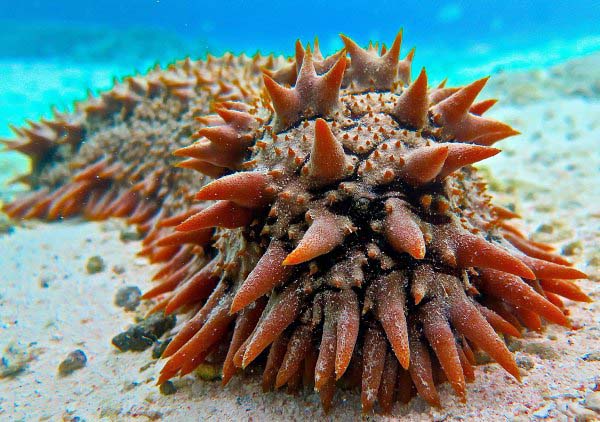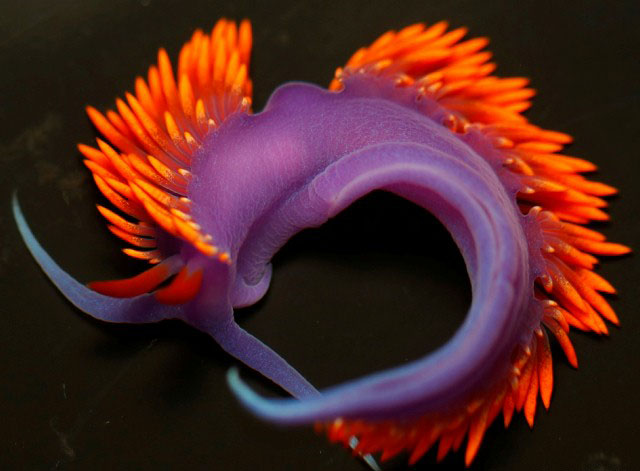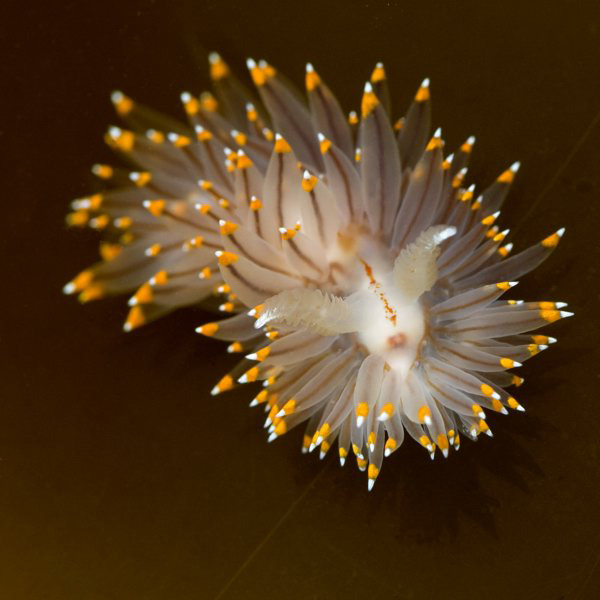How to Tell the Difference Between Sea Slugs and Sea Cucumbers
Everything you need to know to tell these weird and wild invertebrates apart

Hey, we get it—invertebrates can be hard to tell apart. Although these soft-bodied, elongated sea-dwellers may seem similar, sea slugs and sea cucumbers could not be more different. Brush up on your invertebrate facts (and impress your friends) with these easy ways to tell them apart.
First things first: sea slugs and sea cucumbers aren’t even in the same taxonomic group. Sea slugs are a marine gastropod, which is part of Phylum Mollusca, where sea cucumbers are part of Phylum Echinodermata. To put it simply, sea slugs are more closely related to shelled animals, like clams and oysters, than they are to sea cucumbers. On the other hand, sea cucumbers are most closely related to spiny animals, like sea stars and sea urchins.
“Sea slug” is most commonly used in reference to nudibranchs, which are often brightly-colored intricate gastropods found all over the world. There are approximately 3,000 nudibranch species known to science, and we continue to discover new species today. The name can also be used to describe sacoglossans, sea hares and sea butterflies (also known as pteropods). While all types of sea slugs have their unique qualities, they often resemble terrestrial land slugs. The name “sea cucumber” refers to more than 1,000 species in the class Holothuroidea named for their cucumber-like appearance.

So, how can you tell these two spineless critters apart? The easiest way is to look at the head (or rather, look if there is one). Most sea slugs have a defined “head” with tentacles used to sense their surroundings. These tentacles, called rhinophores, allow sea slugs to “smell” chemical signals. Some sea slugs also have exposed gills on their backs (in fact, the term “nudibranch” comes from Greek and Latin words meaning “naked gills”), which can appear feathery and brightly-colored. Conversely, sea cucumbers have no definitive head end—they kind of look like underwater sausages. You can sometimes see tentacles coming out of one end that the cucumber uses to feed, but they can retract those back into their bodies.

If you take a closer look, you’ll be able to see tiny tube feet on the sea cucumbers that are absent from the sea slugs. To move forward, the cucumber pushes water into the feet through a water vascular system, which makes the feet firm and allows them to act like tiny legs that creep the cucumber along. Sea slugs lack tube feet and undulate along the sea floor in a manner that looks similar to land slugs (although some sea slugs can swim, too).
The two also differ in their defense mechanisms—although this is not recommended as a way to test which is which! Since both animals lack hard shells or spines to deter predators, they have evolved to possess some pretty creative ways of defending themselves. Sea slugs are often toxic and have bright coloring to warn predators not to mess with them. They can also secrete acid, ink or slime (depending on the species). Although sea cucumbers can also contain toxins, they have an additional weapon—when threatened, they can spew their internal organs out of their anus. So, if you see a long invertebrate with its organs expelled from their body, it’s a safe bet you’re looking at a sea cucumber.

There you have it—everything you need to know to tell these weird and wild invertebrates apart. Now whether you’re at trivia night, the aquarium or just looking for unique dinner conversations, you’ll be able to wow your friends and establish yourself as an invertebrate expert.